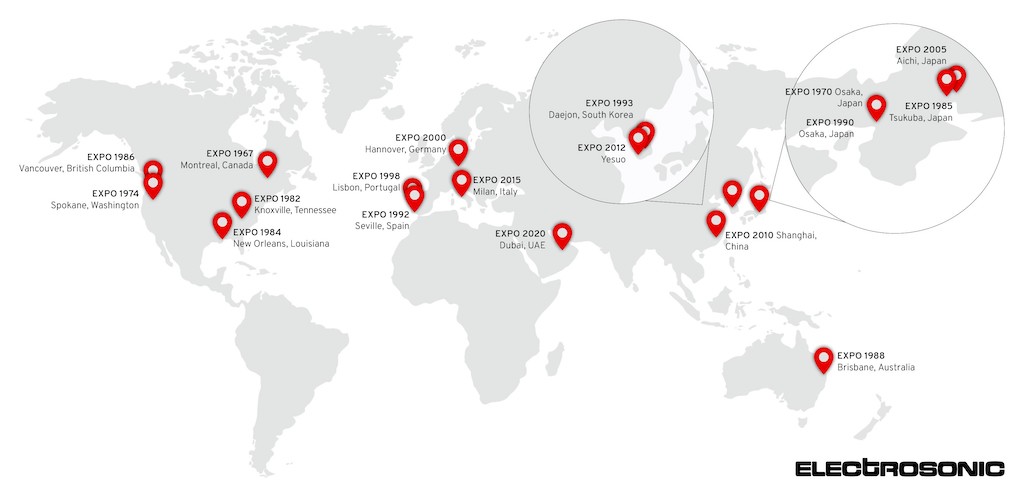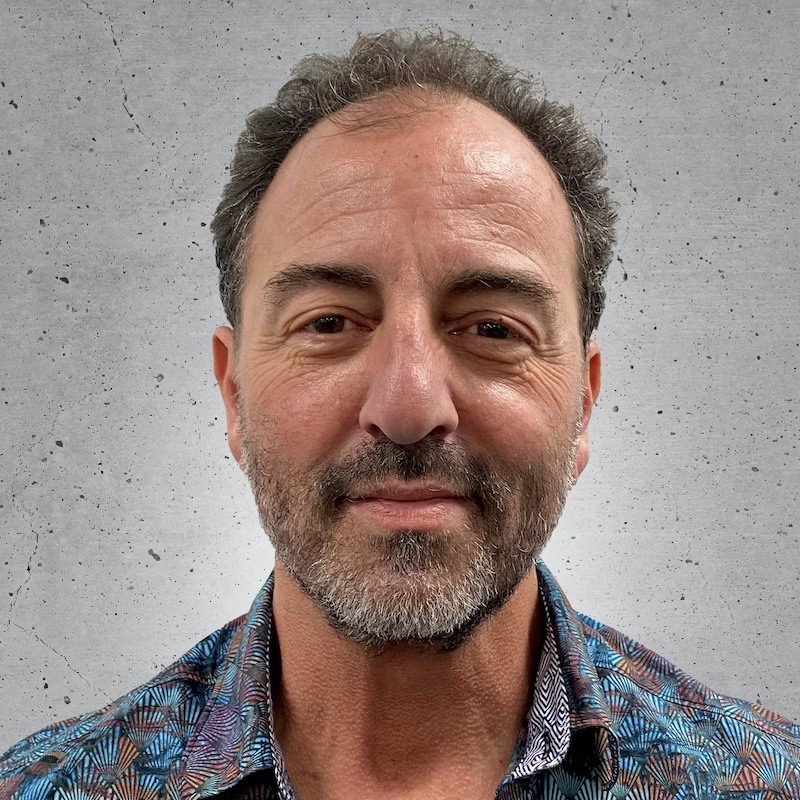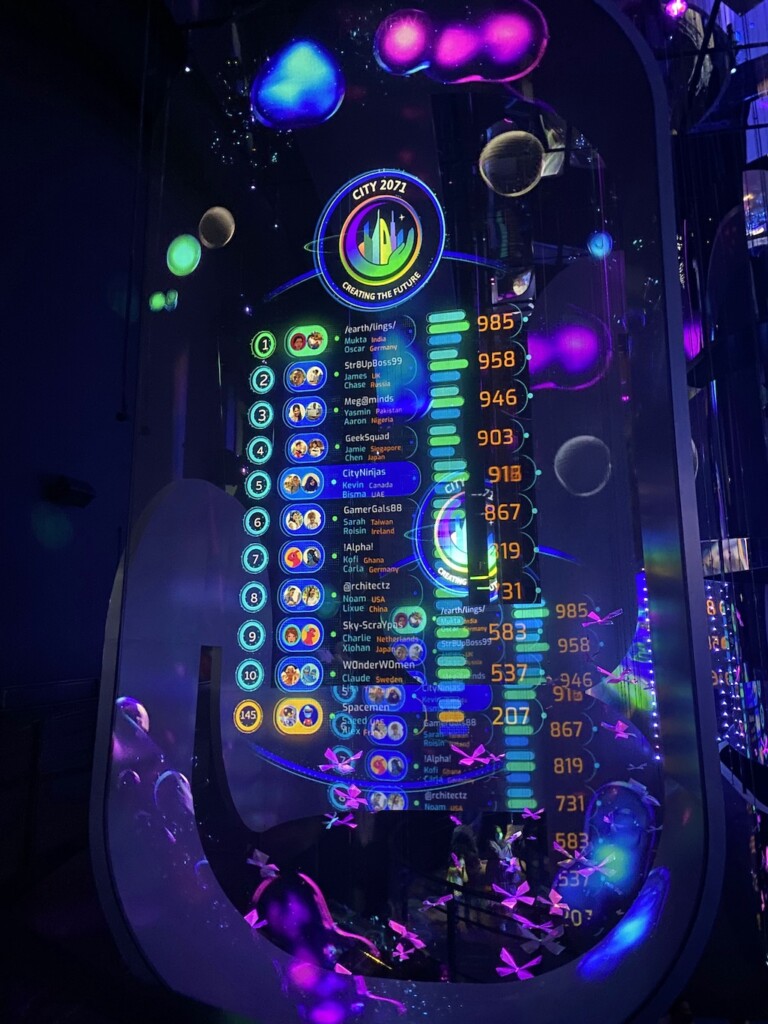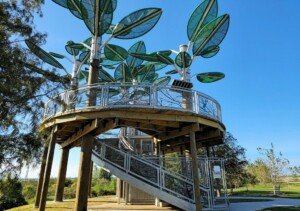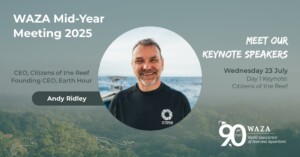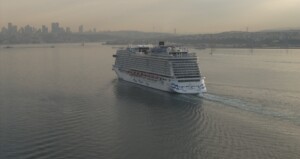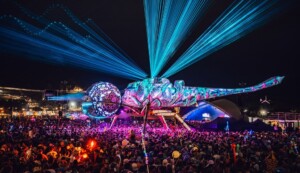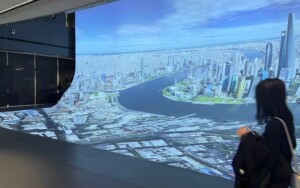A World Expo is an international event where nations exhibit their successes, technologies, and cultures. It is a forum for international cooperation, thought sharing, and discussion of crucial world issues. Millions of people usually attend these expos, which foster understanding and collaboration between nations.
One company that knows a thing or two about how to bring an Expo topic to life in an engaging way is Electrosonic, a leading international audiovisual and technology services company. The firm has collaborated on 90 Expo pavilions at 16 Expos since 1967. It is a trusted technology advisor to participants.
Experiential technology is vital for engaging visitors and conveying information in a compelling way, making exhibits come to life. For nearly 60 years, Electrosonic has provided creative, multi-award-winning audiovisual and experiential technology solutions for some of the biggest and most complicated projects worldwide.
Driven by intrigue and passion for innovation, Electrosonic’s mission is to create memorable experiences where people live, work, and play through the design, development, and support of breakthrough technological solutions.
Electrosonic designs experiential solutions through creativity, storytelling, and technology in partnership with owners, architects, storytellers, creative teams, content producers, and technology partners. The result is remarkable experiences that amaze and enthral visitors.
Ahead of Expo 2025 Osaka, we speak to Chris Conte, executive consultant and global ambassador, about what can turn a good World Expo experience into a truly great one.
The goal of a World Expo pavilion
Conte has played a key role in Electrosonic’s success on global projects for over 20 years. He works with the design consulting division and systems integration teams as an executive consultant, and his expertise in technology design, production, and construction benefits any project team. Conte has designed audiovisual technology for theme parks, museums, World Expos, theatre, spectacles, and hospitality worldwide.
He starts by explaining what makes this type of project unique, drawing on Electrosonic’s extensive experience in this area:
“I have been involved in the Expos since the early 90s. It’s something I love working on, as does Electrosonic. Our founders fell in love with World Expo projects for a couple of reasons. Firstly, it inspired them to work internationally. Secondly, World Expos push the limits of technology and that has been a real inspiration for Electrosonic because it is a form in which companies take chances and want to explore new technologies to tell their story.”
“When we look at Expo pavilions, there are two kinds: a corporate pavilion and a country pavilion. They are a unique design, different from theme park attractions and museums because there are two themes they have to cover. When you design a pavilion for an Expo, you have to cover the main Expo theme and then you also have to cover the pavilion or the country theme.
“Plus, you have to make it relevant to a large, diverse audience. More importantly, you need to add some kind of show element and that’s what makes it dynamic and entertaining. It can’t just be an interesting pavilion. It has to be a memorable pavilion.
“For a great Expo pavilion, the goal is to inspire.”
From Expo 67 to Expo 2025 Osaka
Throughout its 60-year involvement in World Expos, Electrosonic has leveraged its expertise in themed entertainment to create immersive technology solutions. Custom audiovisual and tech solutions, designed by the company’s experienced team, breathe life into pavilions, captivating visitors amidst competition.
Electrosonic offers holistic 360 services, including Technology Master Planning, technology design consulting, previsualization, audio, video and control system design, system engineering, programming and integration, and a range of managed services and support post-installation.
Most recently, Electrosonic worked on several projects at Expo 2020 Dubai. This included Mission Possible – The Opportunity Pavilion, which was one of three thematic pavilions at the event. This challenged visitors to think about global water, food, and energy issues. By engaging visitors, organisers intended to inspire action.
Inside the pavilion, technology helped communicate serious global issues and develop a commitment to change. Interactive technology showed visitors how they may ‘shape the future’ and achieve ‘Mission Possible’. Electrosonic partnered with the engineering and contracting group ALEC to provide audiovisual engineering, integration, and commissioning for all multimedia and interactive exhibits.
The firm also worked on Alif – The Mobility Pavilion and the Canada Pavilion at Expo 2020 Dubai.
Now, we head towards the next World Expo, Expo 2025 Osaka, Electrosonic aims to inspire and engage, communicating critical themes through interactive, entertaining narratives accessible to diverse audiences. Personalised experiences, sustainability, and reliability define its approach, maximising returns on Expo investments.
Engaging with the World Expo theme
As Conte outlined above, it’s not just about creating an interesting exhibit. The challenge of a World Expo project is to create something that engages visitors’ thinking around the event’s themes. Addressing some of the worldwide challenges in communicating these sometimes-complex messages to an international audience, he speaks about the work that the team did on the Mobility Pavilion at Expo 2020 Dubai.
“Dubai was interesting because it was so big and it was during the pandemic, so it was delayed. But they did a resounding job coming out of the pandemic and showcasing this event to the world.”
The Mobility Pavilion was the most ambitious in the history of the event. It spanned over 250,000 square feet and featured cutting-edge interactive, audio, and video technologies along with captivating new narrative formats. The Mobility Pavilion focused on the past, present and future of movement. This is a wide-ranging topic, exploring the connections between people, groups and ideas.
“Wētā Workshop, a special effects company based in New Zealand, was working on this project, and they had these giant figures that were heads of some of the leaders of the Arab world. So, everything was on a scale much larger than we’re used to. That meant that all the projections, all the LEDs and all the audio systems had to be on a scale much larger than the intimate room-to-room museum-style AV.
“We needed to think about how we could deliver those storylines at that grand scale.”
See also: Opportunity beckons at Expo 2020 Dubai
Technology as a tool, not a focus
He continues:
“Today’s technologies like projection and LED are so geared towards those large-scale presentations that it was a fairly easy fit to use those technologies to deliver that storyline. However, one of the key challenges is not to make the technology the star. Our job is to deliver the story and make the technology somewhat imperceptible to the guests. So, you can’t just plaster rooms with projection, loud audio systems and special effects.”
“It’s a delicate balance between the storyline and the technology. We need to deliver the story in an emotional way and pull on the heartstrings, but not hit visitors in the face with light, audio and video. That delicate balance is something that we do well in our projects.”
The end product at the Mobility Pavilion was an installation that provoked contemplation on a never-before-seen scale and drew a multicultural audience into the narrative of human progress in mobility.
Expanding on this balance between the technology and the story, he adds:
“Clients sometimes fall in love with technology. They go through a space, and they see a projection room or a dome theatre, and that’s what they want. But it’s not always the right tech for their project.”
“We always start by asking what emotion they want the guests to feel when they walk into a room. And it may not even be technology that we offer as a solution for the storyteller. It may be shadow puppets. It may be a lighting effect. The key is to identify the emotions you want to evoke and then use the right technologies to deliver the story.”
Personalisation at World Expos
Personalisation is a key trend in the attractions industry, and it is also a good way of creating a more engaging Expo exhibit. Outlining how technology can help to deliver a more personal experience, Conte says:
“Personalisation is often the goal today for helping visitors to connect with a brand or an experience. One good method for Expos is to use a personal device that allows guests to collect assets through the experience or have additional content pushed to them as a way to dig deeper into the experience.”
“However, when you have a personal device and a show that you’re trying to pay attention to, you can be distracted between the two. So, we have to make sure that when we’re cueing people to look at devices, we’re not doing it at a time when this would distract them from the important content in the main show.”
The use of personal devices is getting more popular:
“BRC [Imagination Arts] did this with the Information Communication Pavilion (ICT) for China Mobile at the Shanghai Expo with great success. That was another pavilion that we were involved with.”
This was one of the first times a personal device was used at an Expo. Guests could interact with the device, generate additional content, and then share this new content with the main show presentation in real time. At home, guests could log onto a website and download their personalised content from their pavilion experience.
“It was a wonderful way to add personalisation to the guest experience and enable visitors to go back and relive the attraction. This extended the experience and formed a deeper connection to the topic.”
An individual experience
He continues:
“BRC designed this pavilion to combine both a shared full-immersion experience for the Pavilion with the world’s first personal interactive device called the “ICT Mobile Device”. This digital device allowed visitors moving through the Pavilion to engage personally and individually one-on-one with the shows and exhibits, which BRC developed independently and was quite innovative at that time.”
Electrosonic also worked closely with BRC designing a unique audiovisual experience for the USA Pavilion. This featured three acts of multidimensional, Hollywood-style shows.
Act 1 began with an overture featuring quotes from US presidents displayed on enormous screens. Act 2 included five 30-foot-tall screens, each with a different shape, and blended live-action footage with CGI and 4D elements. To highlight American industry and technology, Electrosonic provided corporate sponsors with advanced audio and projection equipment for the final act.
“As always, BRC does a wonderful job in the art of storytelling. The AV systems we designed did a beautiful job in helping deliver BRC’s intended emotion and dynamic to the storyline.”
Reaching a diverse audience
World Expos reach a huge audience. For example, Expo 2020 Dubai was visited by 24 million visitors. And more than 28 million are expected to attend Expo 2025 Osaka. Given this scope, it can be a challenge to ensure that the pavilion exhibits are as accessible as possible and that they connect with guests from around the world.
Electrosonic has experience communicating with a wide range of international audiences. So, the team can ensure that content is delivered in a way that is meaningful and comprehensible for people from various cultural backgrounds.
“These are international events. The pavilions are seeing visitors from all over the world, and they have different preferences for what they consider entertainment. They also speak different languages. We do a lot of multi-language translation in the pavilions, but most pavilions don’t necessarily have a narrative track. Instead, they tend to offer written materials. This allows for more of a self-exploration experience where people go at their own pace.”
The content must also be accessible to people with different needs. For instance:
“We cater to guests that are hearing impaired and visually impaired too. Those solutions are easy to accommodate within the video and audio systems in the pavilions.
“The challenge is when a client doesn’t take accessibility seriously, and we have to have that discussion with them. But generally, people are accommodating when it comes to accessibility, especially at an international Expo, because they know that they will get people from all walks of life visiting, and they need to be friendly to everyone.”
Reliable technology is key for World Expo projects
We’ve explored how keeping the visitor happy involves creating an engaging, memorable and educational exhibit that is accessible and personal. In addition to this, however, keeping the client happy means that the team also need to create something easy to operate and reliable, something that will last for the full duration of the Expo.
“We’re responsible for the technologies, and the technologies have to work,” says Conte. “Firstly, we only work with technologies that are professional grade. But we also research and try to use available technologies that can be serviced by the manufacturer in the country where it is being installed.
“For example, in Dubai, we selected AV equipment to be used in the designs that were distributed, supported and warranted in the country. Otherwise, if a piece of equipment fails, then you know you’re dealing with an out-of-country warranty. That can take your pavilion out. If you’re a three-month or six-month Expo, you can’t afford to even be down for a day.
“We also spend an enormous amount of time selecting and training the client’s operational and maintenance staff. Or, if we’re in a contract for recruiting and providing service and maintenance staff and operational staff, we would operate it for the length of the Expo, which we do quite often.
“It’s important to be prepared for the operation from day one and we’ll bring those technicians on early on, three to six months beforehand, not only to be trained but also to help get the systems up and running and online. That’s an important factor that we always consider. These are only three-month or six-month expos, so it is all hands on deck. Every day, everyone involved gives 150% to get the project over the line for opening day.”
See also: Technology solutions for sustainable attractions: a holistic approach with Electrosonic
A career in World Expos
Reflecting on his favourite World Expo project to date, Conte speaks about his first-ever Expo: Taejon Expo ’93 in Korea.
“I love working on Expo pavilions, many of which are my favourite. But one that’s near and dear to my heart is the first one I worked on, which was an Electrosonic project as well, for the Korean Expo in 1993. It was a technology park, and we did an Expo pavilion for Samsung called the Samsung StarQuest pavilion. This had a space theme design and was produced by Landmark Entertainment Group.
“This featured an interesting twin dome experience. There were two almost IMAX-style dome theatres with two 60-passenger motion bases inside each dome. So, there was a huge throughput of 240 passengers for every show. Electrosonic invented and built 70 millimetre 8-perf. projection systems for these domes, which was pretty innovative, and a custom fisheye lens to cover this 20-metre dome. It was on par with IMAX domes at the time.
“This was one of my first roles as a technical director in this industry and the first attraction that I did in the Expo world, and it was super high-tech.
“It was a three-month Expo. I spent eight months in Korea working with the Korean people and construction companies – it was a very engaging experience! Working internationally and specifically working on the Expo broadened my horizons. It took me on a new trajectory in my career.”
Why World Expos are special
As we approach the next World Expo, set to take place in Osaka in 2025, Conte discusses why World Expos are such special and interesting projects to work on:
“We’ve talked about the design of a pavilion and how it is a very unique type of project. However, I think the draw to Expos and why they’re so appealing is the cultural engagement. It’s an opportunity to work with people from around the world and learn new ways of business and new ways of design.”
“Often, narratives about a country or a corporation are someone else’s interpretation, and so a World Expo offers a rare chance for that entity to tell its own story”, he adds.
Looking ahead to Expo 2025 Osaka
Conte is also looking forward to heading out to Japan ahead of the event:
“My very first job in this industry was in Japan, and I haven’t been back since. I can’t wait to return to that cultural environment; it’s a pretty special place.”
“Another thing that makes it unique in the design world is that World Expos are notoriously late to the game to start. Right now, we’re less than 14 months away from Expo 2025 Osaka, and we’re still pursuing projects that haven’t even been designed, so we then have to design it, build it, install it and get it ready for opening in a very short period. That’s a challenge, but we can’t wait to get started!”

